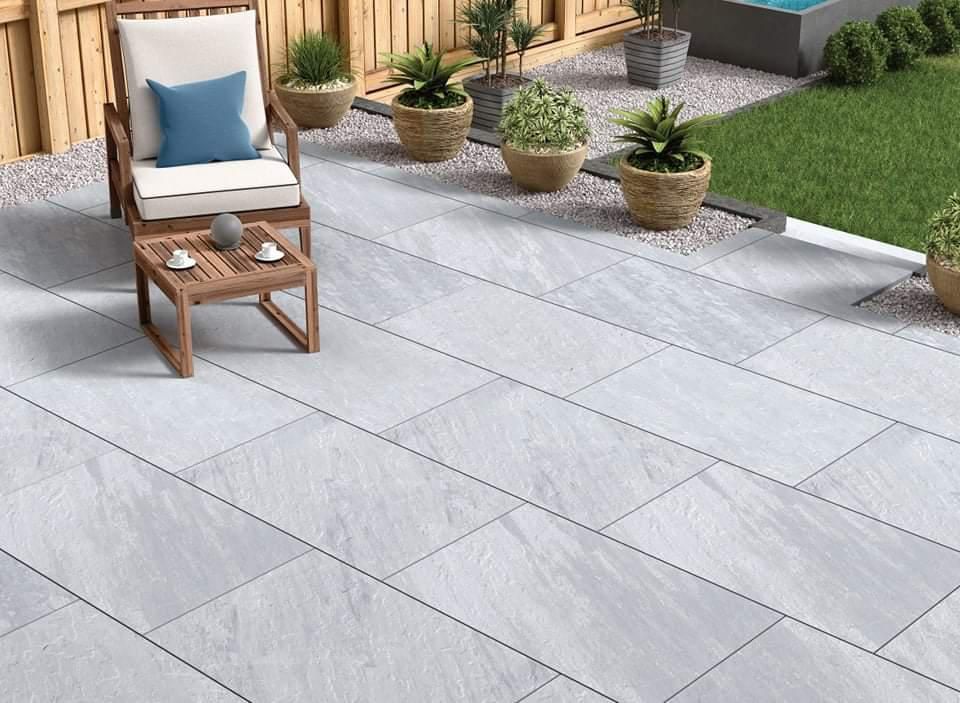When you think of thinking about starting a new driveway, garden or patio paving project, perhaps limestone and sandstone are the two most popular options on the market. In fact, they're almost always the options, but it can be difficult to decide which would be the better choice.
So what are the pros and cons of limestone and sandstone paving? And which one is better? We've put them head-to-head in a bid to help you decide which one is most suitable for your project.
Uniqueness
Since they are formed by nature over a long period of time, each piece will have its own peculiarities when compared to others. Man-made products can't compete when it comes to the beauty of natural stone. Each individual slab will have its own grains and colour, which make it totally unique. Depending on the type and amount of components, limestone paving and sandstone paving will have different features. In regards to limestone, it is formed by 50% terrigenous materials. On the other hand, sandstone has over 50% terrigenous materials, and for that reason, it is classified as a detrital rock.
Cost
If you're laying a new patio or adding a few paving slabs to your garden, you may want paving materials that don't cost the earth – but are good quality at the same time.
Thankfully, both limestone and sandstone paving slabs offer the double whammy of affordability and durability. However, if you were to compare pricing alone, Indian limestone paving slabs would just edge it, costing a bit cheaper.
Durability
Both limestone and sandstone perform well in durability. As weather conditions in the UK are notoriously diverse, any stone paving must endure all weathers. Luck for you, both of them generally tend to absorb minimal amounts of water, meaning they are ideal for all outdoor spaces, especially if you reside in an area of the country prone to rain.
They are durable. You only have to look at the many important buildings like museums, churches, schools and mansions that have been built from limestone and sandstone and stood the test of time to realise this is a hard-working material that will last and last.
One minor difference between the two stones is that lighter shades of sandstone are slightly more porous than darker colours. Because these lighter variations take in a little more water, they may require extra cleaning or sealant application, although the difference is minimal.
Versatility
Both limestone and sandstone can be easily cut into various sizes and shapes and adapted to fit in with any style or garden project.
When it comes to versatility of use, sandstone and limestone are both great choices – their strength, durability and range of finishes and colours mean they can adapt to almost any style of garden.
Sandstone makes fantastic patio and garden path paving for any property type, contemporary or traditional.
Limestone on the other hand is suitable for a whole host of areas, both internally and externally. Driveways, gardens, patios, pathways, stepping stones and interior flooring, the list is endless.
It's too close to call in this final round, with both being versatile in their own unique ways. Sandstone has an unrivalled range of colours and finishes. Whereas limestone is equally unmatched with its exterior and interior applications.
Maintenance
Your limestone and sandstone tiles need to be sealed immediately once they're installed. This will help keep dirt and liquids from entering the stone's pores for the next two to five years. If a drop of water falls on the stone and soaks into the material, you need to reseal the tiles. You can seal those tiles easily on your own.
Luckily, once installed, natural stones like limestone and sandstone will last for a long time and it's much easier to clean than its manufactured counterpart.
To maintain your tiles daily, you'll need to purchase some microfiber cloths and neutral cleaning products. Because limestone is vulnerable to acidity, you'll need some pH-neutral products to clean your tiles. Look for cleaners specifically made for natural stones. Chemical-laden detergents are known for making limestone look dull, so it's essential you avoid such cleaners and clean up spills as soon as possible.
For this category, it's a tie, meaning it's hard to tell which one is much better.
Appearance
Until now, the differences between limestone and sandstone have been relatively minor. But that's because the main difference between limestone and sandstone isn't practical – it's aesthetic.
For instance, limestone pavers tend to be smooth and flat with a texture like orange peel, while sandstone pavers are more rippled and ridged (also known as 'riven'), sometimes with chiselled edges. As such, limestone is best for uniform, contemporary gardens, while sandstone pavers suit a more rustic, organic outdoor space.
In the battle of limestone vs sandstone paving, sandstone has managed to pave its way to success. With the huge selection of colours, finishes, products and textures on offer, we feel it's a worthy champion.
However, an honourable mention must go to the durable limestone, which should definitely be considered by those looking for hard-wearing paving in their garden.
Whichever paving choice you make depends on your own preferences, property type, project and desired finish.
More details at Stone Paving Direct Ltd, you can find more information about porcelain paving, split face tiles, and luxury vinyl flooring.



 StableDiffusion
StableDiffusion StableDiffusion
StableDiffusion StableDiffusion
StableDiffusion Photo by
Photo by  Photo by
Photo by  Photo by
Photo by 
 Photo by
Photo by  Photo by
Photo by  Photo by
Photo by  Photo by
Photo by  Photo by
Photo by 







